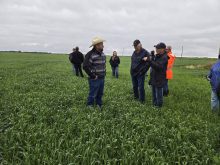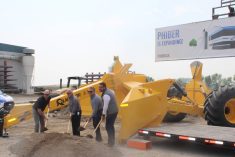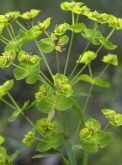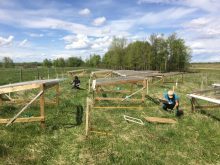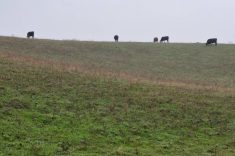While the east side battles forest fires, the normally dry southwestern pastures are poised for lush growth
Pasture conditions around the province this spring seem to be a mixed bag of sorts, ranging from lush to bone dry.
In a topsy-turvy turn of events, the southwest, where drought is the rule rather than the exception, ample rains have set the stage for good pasture conditions, said Jane Thornton, a pasture and rangeland specialist based in Souris.
“I thought it was going to be really early, but it’s kind of back to normal,” she said.
Despite a warm March, cool weather in April held pasture growth back into a “static state” and dashed hopes for an early spring and extra days on pasture for area ranchers.
Read Also
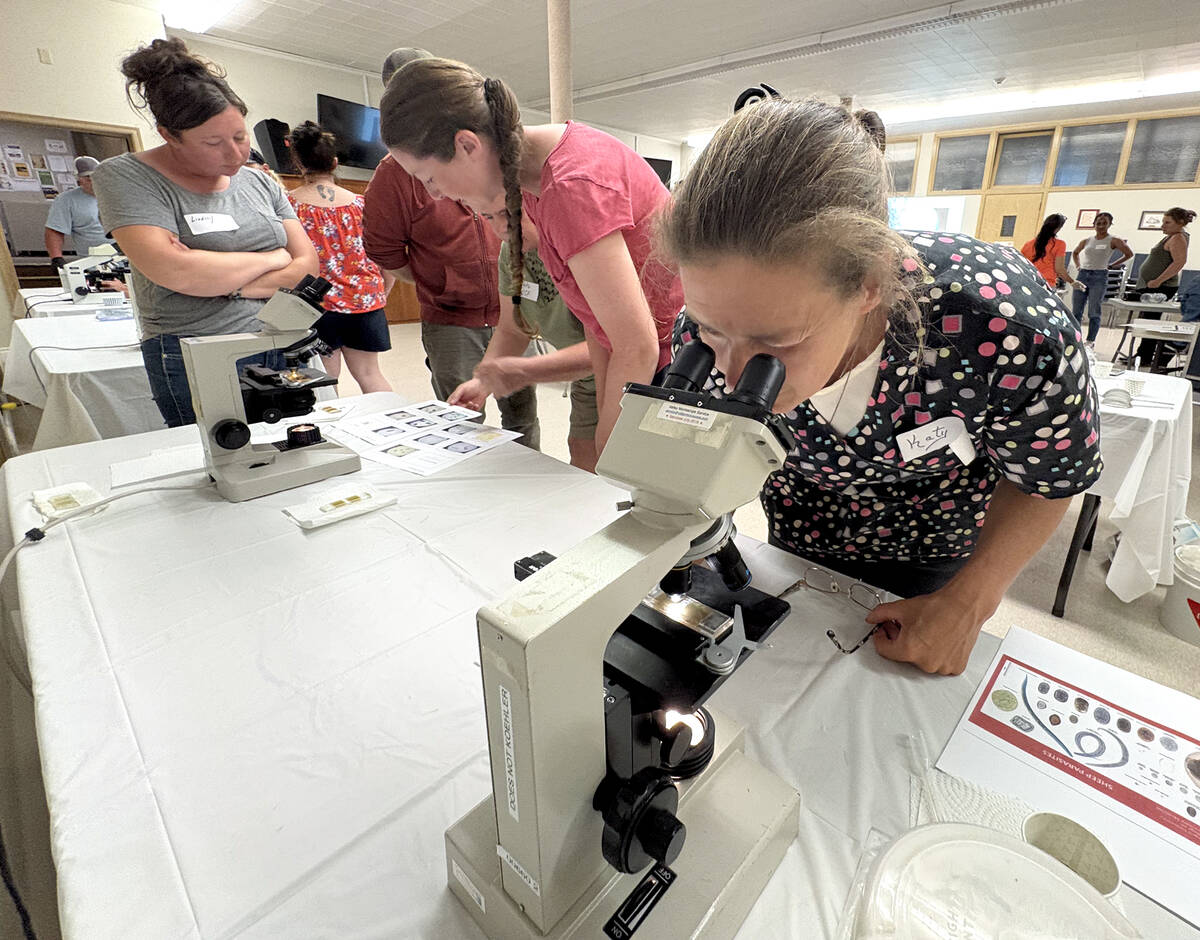
Smart deworming for sheep starts with individual fecal egg counts
Fecal egg count tests are one step to managing dewormer resistance and managing sheep parasites on Canadian sheep farms to maintain flock health.
“If we get a few hot days, it’s going to grow like crazy,” said Thornton.
In the Oak Lake area that was flooded last year, the water table that was topped up by spring rains is still at record highs.
Weather statistics show accumulated precipitation so far this year on the west side of the province is well above the 30-year average, with Pierson at 227 per cent, Birtle 242 per cent above normal, and Brandon at 197 per cent.
Farther east, moisture levels drop off.
Near Gladstone, Larry Fisher, who recently retired from his MAFRI post to take up custom grazing full time, said that “everything is early” and he figures that he might get an extra 10 days on the front end of the grazing season.
“We haven’t had much rain,” he said, adding that his area has received less than an inch of rain since snowmelt, which was minimal to begin with.
Despite continuing problems from Lake Manitoba flooding, he didn’t expect a shortage of pasture as cattle are moved farther inland for summer grazing. Many ranchers have sold off their cattle in recent years, leaving room for herds from elsewhere to move in.
Near Dauphin, MAFRI farm production adviser Pam Iwanchysko said recent heat and moisture have been pushing pastures along at a good pace.
“There’s lots of cows on pasture already that shouldn’t be,” she joked. “But things have really progressed over the past week.”
Moisture in the area is adequate for the most part, but some areas are borderline dry. A dust storm — the first in many years — was seen recently in the Dauphin area, while the Russell area was still too wet to seed.
There is a pasture shortfall in the area, mainly due to increased demand from ranchers near Lake Manitoba, and rents have risen accordingly.
Tim Clarke, a MAFRI forage and pasture specialist based in Ashern and Lundar, said pastures in the north Interlake are coming along slowly due to low overnight temperatures, but faster than last year.
Excess moisture continues to be a problem in areas near Lake Manitoba, and pasture may be in short supply as a result.
“The land that was flooded last year is still really wet, but where it wasn’t, it’s relatively dry,” he said. Flooded pastures are “mostly black” with only sparse growth so far, and some herds will have to be moved to other areas again this year.
High water tables have pushed up salinity and receding waters from the slightly saline Lake Manitoba may mean more headaches with foxtail barley this summer, he added.
“When you get a lake the size of Lake Manitoba, and it’s relatively flat around it, it floods a lot of acres,” said Clarke.
In Manitoba’s far east, Don Winnicky, a councillor and rancher in the RM of Piney near Sandilands Provincial Forest, said his pastures are “terrible.”
“I’ve never seen them so bad. We haven’t had rain here since last year on Canada Day,” said Winnicky.
He’s got some hay left over from last year, but he’s reluctant to use it because the outlook for this year’s hay crop looks dismal.
The irony of this spring’s weather switcheroo has him scratching his head, because the east side of the province where he runs 250 cows is typically so wet that rubber boots are de rigeur until July. This year the region is battling forest fires.
“Out in the southwest, guys are getting stuck trying to seed and here, we’re praying for rain, but it ain’t coming,” said Winnicky.






